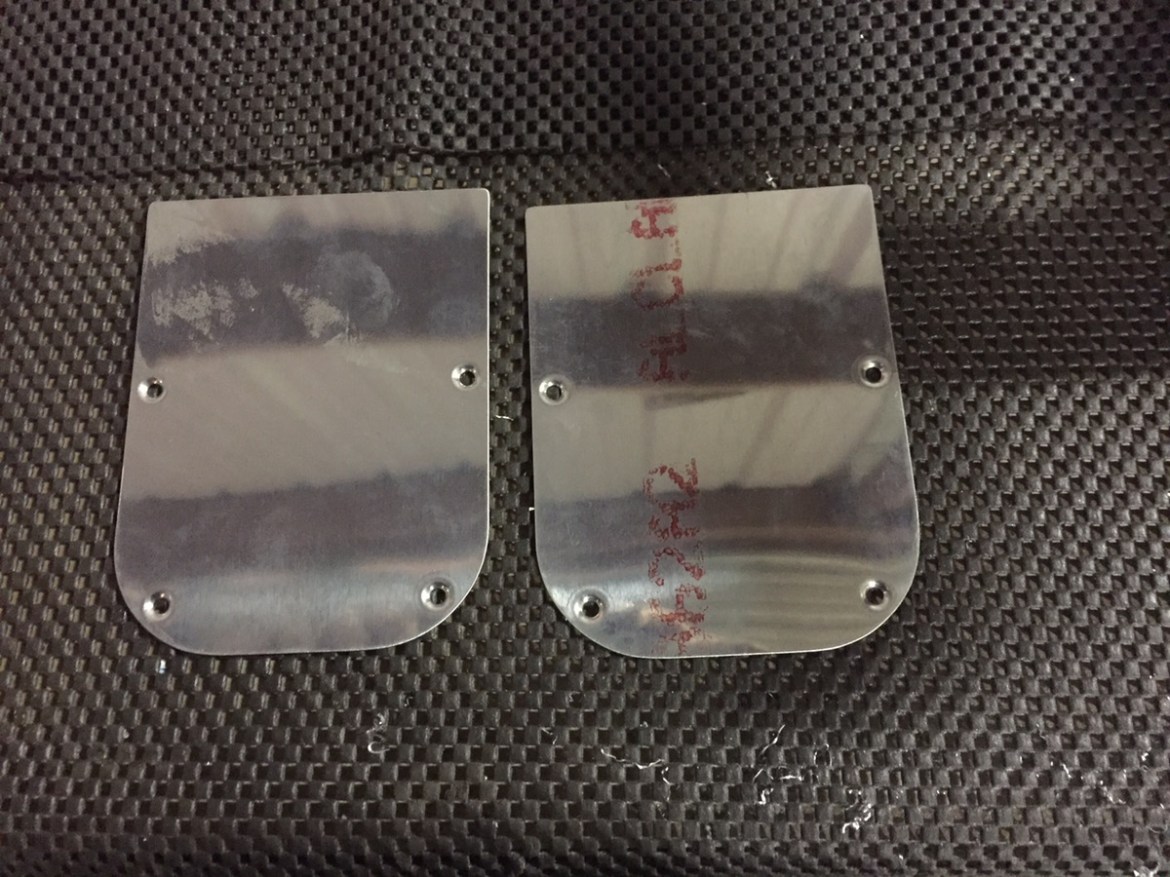Service Bulletin 14-01-31 (2)
I completed drilling out all of the rivets holding the four ribs to the skin. With the proper tools and techniques, this is a breeze. The technique I use is this.
First I drill the rivet head out with the special rivet removal tool. This tool has different size heads and bits that fit perfectly over the head of a rivet to ensure that the drill bit remains centered and parallel the the rivet. Additionally, it ensures that you drill to the appropriate depth.
Secondly, I pop the head of the rivet off with the appropriately sized punch. In this case 3/32″.

And finally, I use a center punch to pop the remaining rivet out. In many instances it is very beneficial to use a clamp close to the rivet. This is particularly true towards the ends of the ribs. This prevents the rib from bending or deforming, and also ensures you don’t get any spring back. Spring back makes the center punch pack less energy, and as a result you may require more attempts, and more opportunities for deformation.
Now that the easy rivets were done, it was time to move onto more challenging rivets. For these rivets I used the 90 degree angle adaptor. To ensure I was centered on each rivet, I first used the center punch to mark the center point. I then used the deburring bit to make a nice perfectly centered divot for the drill bit to rest in. This doesn’t make drilling fool proof but it certainly increases the odds.

Again, clamps are useful for preventing deformation and making the center punch more effective.
I was able to get all four ribs removed fairly quickly. All the rivet removals went flawlessly except for one that was just enlarged by a small fraction. I’m not concerned, as its barely noticeable.


After removing all the rivets in the center section, for which there is easy access, it was time to move onto the most challenging rivets to remove. Those connecting the angles to the front spar inside the leading edge of the horizontal stab. I didn’t think my rivet removal tool would work due to the narrowing angle of the leading edge. However, with enough finesse and a dose of patience i was able to get it work using the 90 degree drilling attachment.

As you can see the results are almost flawless. I still need to remove these rivets. 

Unfortunately, on the second angle, those furthest outboard were more difficult, and I would up with three rivets that were off center. Luckily they are not deep, and if they touch the angle, they only do so barely. 
It was very difficult with the angle and hand position to determine that I was off center. Everything looked centered. I’m not entirely sure how I’m going to resolve these rivets. Potential courses of action are 1) grind or file the heads down in some way, 2) drill from the backside on the shop heads, or 3) attempt to use smaller bits to move the holes to the center. If there is a fourth or fifth option, I haven’t figured it out yet. I decided this was the perfect stopping point for the evening, as I could think about the problem and do some research before tackling it tomorrow.

So far, this service bulletin is going fast, and successfully. I’m keeping my fingers crossed that I can surmount these three problem rivets. If I cannot, I will simply replace this angle. Thankfully, this angle is the top angle, and will not require the back drilling to the fuselage that the bottom angle would require.









